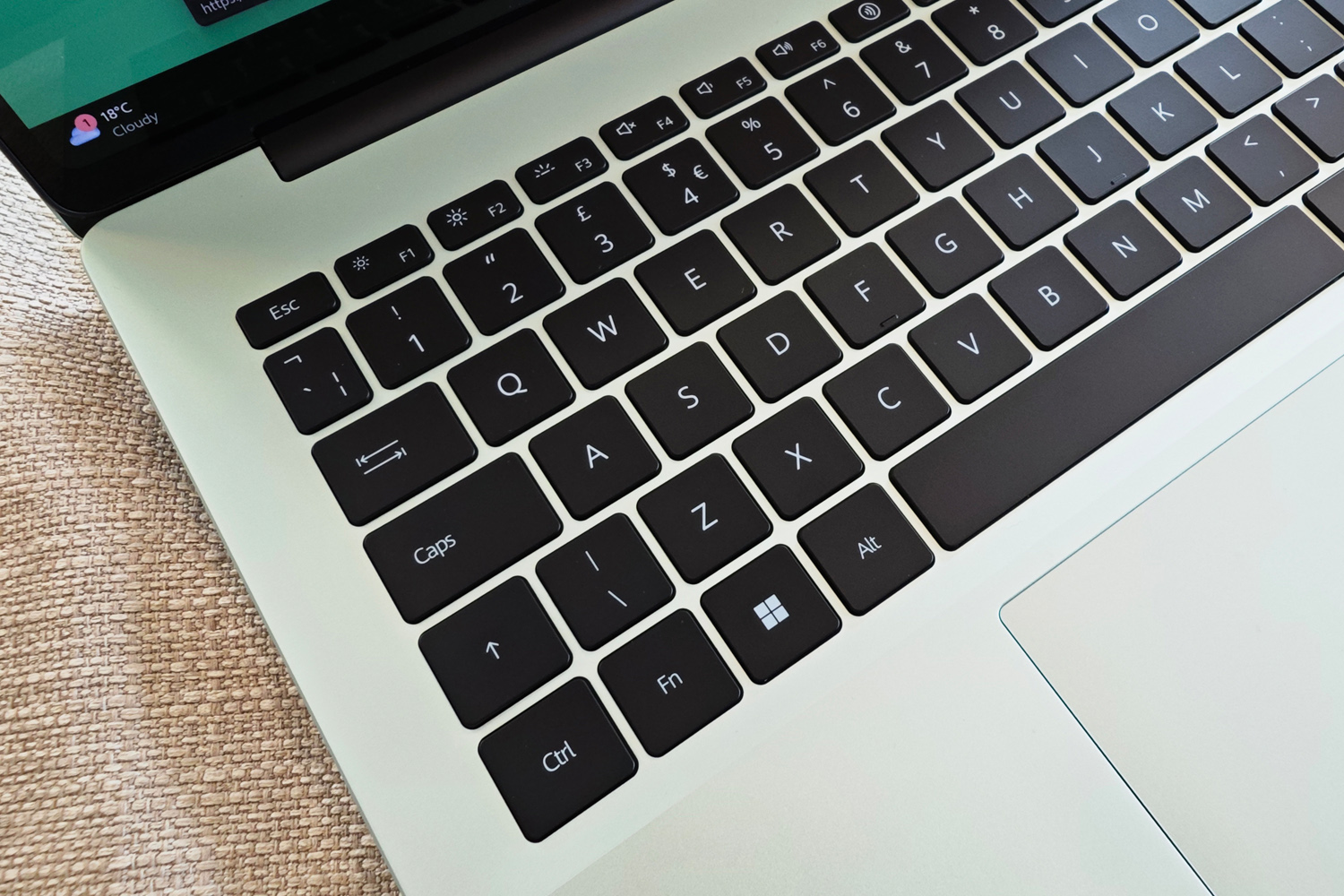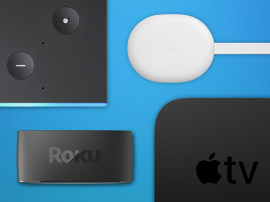Huawei MateBook 14 (2024) hands-on review: load lightened
Can this minty-fresh laptop match the mighty MacBook Air?

Initial Stuff Verdict
This slimmer, lighter MateBook 14 is shaping up to be a very capable all-rounder ultraportable
Pros
- Sleeker styling and skinny screen bezels
- Intel Core Ultra 7 muscle
- Eye-soothing OLED display
Cons
- What if you don’t like mint green?
Introduction
It’s usually the top-tier MateBook X Pro that commands all the attention whenever Huawei refreshes its laptop line-up – but 2024 might be different. Sure, the new flagship is lighter than virtually any current top laptop, but a revised design, Intel Core Ultra performance and an OLED screen make the MateBook 14 almost as compelling.
At just 1.31kg it’s still perfectly portable, and it doesn’t skimp on connectivity. When it goes on sale on the 18th of June, it’ll undercut the MacBook Air by a significant margin (or it will if you try to match it for memory and storage). After getting some hands-on time ahead of the official unveiling, it might just be the everyman ultraportable Windows fans have been waiting for.
How we test laptops
Every laptop reviewed on Stuff is used as our main device throughout the testing process. We use industry standard benchmarks and tests, as well as our own years of experience, to judge general performance, battery life, display and sound quality. Manufacturers have no visibility on reviews before they appear online, and we never accept payment to feature products.
Find out more about how we test and rate products.
Design & build: make mine mint



Mint Green probably wouldn’t have been my first choice when buying a new laptop, but in person, the Huawei MateBook 14 pulls off such a distinctive hue rather convincingly. The aluminium finish looks dark green at certain angles, and an almost silver-like light at others.
It helps that Huawei has streamlined the styling, opting for more of a wedge shape than previous iterations, which were a bit blockier. Factor in the prominent yet simple logo on the lid, a thickness less than 15mm at its most prominent, and a new air vent pattern on the underside comprised of hundreds of tiny holes, and you can’t deny this is one good-looking laptop.
Open the lid and you’ll spot the satisfyingly skinny screen bezels and ‘frameless’ keyboard, with the keys sitting flush to the laptop body rather than recessed like previous generation MateBook 14s. Some might say Apple has the edge on laptop design; models like this would like to disagree.
There’s more connectivity here than you’ll find on Apple’s offering, too. Two USB ports (one either side), a full-size HDMI port and a 3.5mm audio port, as well as a single USB-C port. That has to be used for charging, though, so you’ll need a dongle to hook up any other USB-C peripherals.
Screen & sound: winning combination

OLEDs are the accepted norm in the phone and TV worlds, but they’re still something of a rarity in laptops. Unless you’re paying the big bucks, anyway. That makes the MateBook 14 a bit special, trading blows with Asus and Lenovo (the two biggest OLED adopters so far) courtesy of a 14in stunner of a screen.
It has a wonderfully crisp 2880×1920 resolution, work-friendly 3:2 aspect ratio, and dynamic 60/120Hz refresh rate that lets you prioritise smooth motion or longer battery life. It’s touch-friendly, too, and even supports Huawei’s M-Pencil stylus. I’d want to keep a cloth handy if you plan on smudging the screen with your fingers, though – that glossy finish will quickly pick up prints.
Colours looked vibrant and impactful, with deep inky blacks and exceptional contrast. viewing angles were top tier, too.
Huawei reckons it can manage 450 nits peak brightness, which should help HDR content stand out a little better. It’s half what the MateBook X Pro is capable of, but given that model costs almost twice the price, I think it’s a fair trade. The screen seemed bright enough for working in the well-lit office my demo was held in, even with sunlight streaming in through the floor-to-ceiling windows.
The stereo speakers are down-firing here, and I didn’t get the chance to properly crank up the volume, so can’t say how they compare to the current class leaders.
Keyboard & touchpad: out of frame



Now Huawei has ditched the recessed ‘frame’ that surrounded the keys on previous MateBook 14 models, the keyboard looks much more minimal. The layout hasn’t changed, though, meaning half-height function keys and double-stacked up and down arrow keys. Otherwise it’s a full-size QWERTY layout.
The power button is still out on its lonesome above the delete key, where you’re unlikely to accidentally press it. It again doubles as a fingerprint sensor (your only choice for biometric login, as Windows Hello facial recognition isn’t supported) but I couldn’t test how quickly it detects digits.
The keys themselves have the sort of travel and springy feel I’ve come to expect from Huawei’s laptops,. Which is to say it has plenty of the former, and enough of the latter I wasn’t bottoming out each key during a brief typing test unless I properly hammered them. Bleed from the backlight is minimal, with each key clearly illuminated by white LEDs.
It’s a decent size, but the MateBook 14’s touchpad isn’t as expansive as the one fitted on the MateBook X Pro, or as clever; there are physical switches underneath, instead of haptic motors and pressure sensors. It felt perfectly responsive though, recognising multi-touch gestures and being friction-free for smooth mouse movement.
The MateBook doesn’t do anything spectacular here – but what it does do, it does very well.
Performance & battery life: cores and effect



What hardware you’ll find inside the MateBook 14 depends where you live. The UK will be getting an Intel Core Ultra 7 CPU, 16GB of RAM and 1TB of storage as standard, which is very competitive for the £1199 asking price. There’ll be versions with Ultra 5 chips and potentially smaller SSDs in other territories. Naturally the US won’t be getting this laptop in any form.
I wasn’t able to benchmark the demo machines, or run any particularly demanding apps, so can’t make any claims as to the MateBook 14’s performance potential. A Core Ultra 7 155H is no slouch, though, having proved a very capable chip when i tested the Asus Zenbook 14 OLED at the start of 2024. It has 22 threads split across six performance cores, eight efficiency cores, and two low-power efficiency cores, and clock speeds max out at a healthy 4.8GHz. There’s some AI acceleration too, once apps properly support it.
Combined with Huawei’s system-wide Super Turbo, it meant the laptop needed less than ten seconds to reach the Windows desktop from a cold boot. It also felt perfectly responsive after loading up a bunch of browser tabs. For the sorts of jobs an ultraportable machine like this is going to be doing on the daily – think emails, text documents and a bit of image editing rather than 4K video encodes – there should be plenty of power here.
On paper, the Arc A350M graphics are capable of light gaming, including esports titles like League of Legends, albeit at 1080p rather than this laptop’s native resolution.
According to Huawei, the 70Whr battery is good for about seven hours of typical use, or 19 hours of video playback. That sounds like enough to get through a working day without reaching for a power cable, if only just. A MacBook Air will likely fare much better, on account of Apple’s ridiculously efficient M3 silicon – but that’s just a guess until I get one in for a full review.
Huawei MateBook 14 (2024) initial verdict

Intel’s Core Ultra CPUs are finding homes in plenty of slim, light laptops right now. The Huawei MateBook 14 stands out from most, and not just because of that distinctive mint green finish. The OLED display looked gorgeous during my brief demo, and there’s a decent selection of ports at the sides.
Pricing puts it directly in the MacBook Air’s firing line, until you realise Apple wants an extra £400 to match the Huawei’s memory and storage capacity. Performance and battery life comparisons will have to wait for a full review, and even the firm’s own estimates suggest the MacBook will stay ahead on longevity – but I can’t deny you’re getting an awful lot of laptop for your money here.
Huawei MateBook 14 (2024) technical specifications
| Screen | 14in, 2880×1920 OLED w/ 120Hz |
| CPU | Intel Core Ultra 5/Ultra 7 |
| Memory | 16GB |
| Graphics | Intel Ark on-board |
| Storage | 1TB |
| Operating system | Windows 11 |
| Battery | 70Whr |
| Dimensions | 14.5mm thick, 1.31kg |


